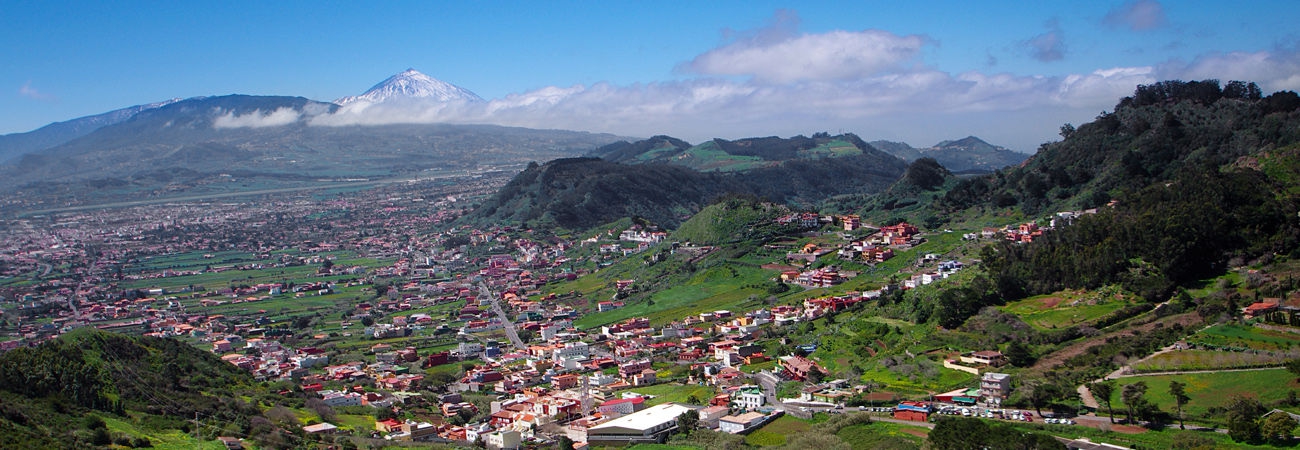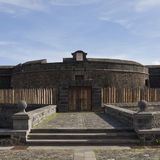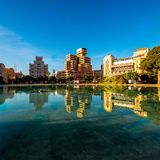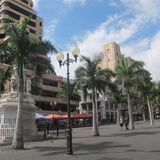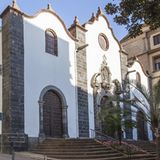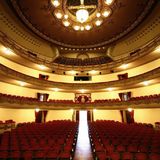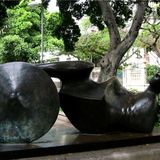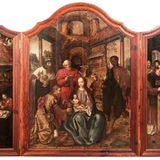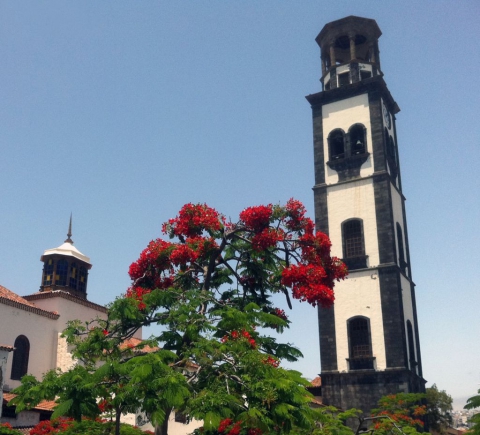Santa Cruz de Tenerife
A stroll around the streets of Santa Cruz de Tenerife is a fascinating experience, offering a glimpse of its outstanding heritage. Some of the sites you can see on your walk include the Churches of La Concepcion and San Francisco, the Castle of San Juan, Plaza de la Candelaria, the Museum of Man and Nature, the Municipal Museum of Fine Arts, etc.
CHURCH OF LA CONCEPCION
Tel.: 922 243 847
In 1500, work started on a church devoted to Santa Cruz, founded by father Juan Guerra. The church, named Nuestra Señora de la Concepción in 1638, was destroyed by fire in 1652 and re-built in 1653; the current tower was built in 1786.
The current structure therefore, dates from the 17th and 18th centuries. It has five naves, laid out in a Latin Cross and Tuscan architectural style, with a stamp of Canary Island colonial style.
The church houses an important artistic heritage. The oldest pieces are a small Gothic figure of the Virgen de Consolación, to whom Fernández de Lugo, conqueror of Tenerife, built a church in 1496, and the Cruz de la Conquista, brought by Fernández de Lugo when he disembarked in 1494.
The church has a series of marble fonts made in Genoa. The pulpit includes carvings by local artist Rodríguez de la Oliva.
Precious metal-work includes the silver throne used to carry the figure of the Santo Entierro during the Easter week processions, considered to be one of the best in the Canary Islands. The throne of the Corpus is conserved in the Sacristy, made by Damián de Castro, artist from Cordoba who is the author of other works in the church.
The Logman brothers provided this church, where they served as priests, with valuable works of art, like the beautiful monstrance called "La Custodia de los Logman".
The master piece of the church, for many, is the Carta Chapel, 18th century, dedicated to San Matias. The Baroque-Churrigueresque reredos is a very valuable piece.
The main altar is presided over by la Inmaculada Concepción, an excellent figure made by an artist from La Orotava called Fernando Estévez. The reredos is one of the finest examples of Baroque in Tenerife.
The church conserves one of the best works of religious art of the Island; the Cristo del Buen Viaje, 17th century, along with other valuable pieces like the figures of Canary artists Miguel Arroyo, Luján Pérez, Rodríguez de la Oliva, González de Ocampo and Fernando Estévez.
The collection of paintings includes two interesting canvasses by Juan de Miranda and other anonymous works.
The church also has a large musical archive and an organ that was built in London in 1862.
Castillo de San Juan
El castillo de San Juan, el mejor conservado de la isla, se construyó en la primera mitad del siglo XVII y fue reconstruido en 1765. Popularmente conocido como castillo Negro por ubicarse junto a la Caleta de Negros, es de planta circular y artillada, con sillería volcánica de tonos grises. Muy cerca se encuentra el Parque Marítimo "César Manrique".
PLAZA DE ESPAÑA AND THE ISLAND CABILDO
Tel.: 901 501 901
Plaza de España was built in the 40´s on land occupied by the San Cristobal castle, a 16th century fort that was demolished in 1929.
The public area in Santa Cruz, comprising Plaza de España, Alameda del Duque de Santa Elena and Plaza de Candelaria, remodelled according to a design by Swiss architects Herzog and De Meuron, was officially reopened on 24th July 2008.
Architect Tomás Machado is the author of the monument to Los Caidos that he was instructed to build in 1944. The square was opened in 1950.
The bronze figures of soldiers and the fatherland - like a classical devotion - were made by Cejas Zaldivar, who also did the lateral relief work in the stone. The figure of the Victoria is the work of Reyes Barroso.
Opposite the square is the Tenerife Island Cabildo (Government), seat of the first Tenerife corporation. It is a renaissance structure built between 1934 and 1940 by architect Marrero Regalado. It could be defined as classical monumental style. The main hall holds some interesting murals done by Canary Island painter José Aguiar.
On the other side of the square from the Cabildo is the Alameda del Duque de Santa Elena, or Marquis de Branciforte.
PLAZA DE LA CANDELARIA AND CARTA PALACE
Tel.: 922 606 000 (Town Hall).
Situated at the entrance of the former San Cristobal castle, it was used for inspecting the garrison, which is why it was called Plaza Real or Plaza del Castillo Grande. The original name was changed to Plaza de la Pila when a public fountain was placed there in 1706. It was also known as Plaza de la Constitución and, finally it was given its present name in 1787, when the monument to the Triumfo de la Candelaria was installed.
The neo-classical monument is said to have been built by Genoese artist Pasquale Bocciardo, of Carrara marble. The figure of the Virgen has Gothic features and there is a sculpture of four Guanche chiefs in attitude of worship at her feet.
On one side of the square is the Carta Palace - 1752 - one of the best civil works of Canary Island Baroque to be found, although the facade shows the proximity of the neo-classical period. Captain Matías Rodríguez Carta had it built. The sober front contrasts with the rich moulded ceilings and interior balcony.
The Casino building is close by, built in 1935 in the modernist eclectic style of the time. It holds a wealth of artistic heritage, with works by well-known Canary Island painters
CHURCH OF SAN FRANCISCO AND PLAZA DEL PRINCIPE
Tel.: 922 244 562
Visiting Times: During church services.
The present church of San Francisco used to be the church of the old San Pedro de Alcántara Franciscan convent, originally occupied by the church of Nuestra Señora de la Soledad.
The current Baroque construction dates from the 17th and 18th centuries. It has a lovely Corinthian portico with two Salomonic Columns of Canary Island stone.
The sumptuous Baroque interior has three naves.
The profusely decorated central reredos (18th century) is considered to be one of the best in the Canary Islands. It houses figures of La Inmaculada, 19th century work of the Andalucia School, a figure of San Francisco de Asis, from the workshops of Havana and the figure of Santo Domingo, 17th century, by an anonymous Canary Island artist.
The Baroque Ecce Homo, 50 centimetre bust of the Señor de las Tribulaciones is also worth attention. It is of the Seville School, by an anonymous artist.
The chapel of the Orden Tercera, in calle Villalba Hervás, founded in 1763 by several Irish families, houses one of the best pieces of the Canary Island Easter celebrations: the figure of the Señor del Huerto.
Behind the church, the gardens of the San Pedro de Alcántara convent are covered by the Plaza del Principe, designed by Manuel de Oraá in 1857 and named after Alfonso XIII, Prince of Asturias at the time.
GUIMERA THEATRE
Tel.: 922 606 265
Address: Plaza isla de la Madera
Planned in 1849 by architect Manuel de Oraá in classical-romantic style, it is built on the old Santo Domingo convent that was there until 1835, the date of Mendizábal´s sale of church lands, during the reign of Isabel II.
Although the theatre was opened in 1851, it was only given its present name in 1925, in honour of the famous Tenerife playwright Angel Guimerá, who died in Barcelona in 1924.
Recently restored, the interior is decorated with gold plate and has frescoes by Tenerife artist Angel Romero on the ceiling.
Esculturas en la calle
Santa Cruz de Tenerife fue sede de la "Primera Exposición Internacional de Esculturas en la Calle" en diciembre de 1973 y enero de 1974. El parque municipal García Sanabria y las ramblas acogieron más de 40 obras, que constituyen hoy un museo de arte contemporáneo al aire libre. Se pueden admirar esculturas de artistas como Oscar Domínguez, Pablo Serrano, José Guinovart, José Abad, Joan Miró, Andreu Alfaro, Ricardo Ugarte, Martín Chirino y Henry Moore; este último artista realizó en bronce "El guerrero Goslar", considerada la escultura de mayor cotización económica de Canarias.
CHURCH OF NUESTRA SEÑORA DE LAS NIEVES
Tel.: 922 590 186
The church of Nuestra Señora de las Nieves, Patron Saint of Taganana, is one of the oldest in Tenerife, services were already being held in 1506.
Tenerife architect, Domingo Rodríguez Rivero designed the extension, which he carried out in the 17th century, increasing the church to three naves. Inside, with Mudejar panelled ceilings, the famous triple screen of the Adoration of the Kings is worth a good look. These are Flemish screens from the Bruges workshops, probably painted in the second third of 16th century, supposedly painted by Hans Memmling, pupil of Van Eyck, although Professor Francisco Galante believes the screens were painted by Marcellus Coffermans, using the compositional style of Van der Weyden and Memmling.
The figure of the Virgen de las Nieves, from the 16th century, is very special, as is the figure of El Crucificado, called El Crucificado del Flachat, and the figure of La Concepción, both the latter two works are of the French School, arriving at Taganana when the French ship Flachat sank of the coast in 1870.







